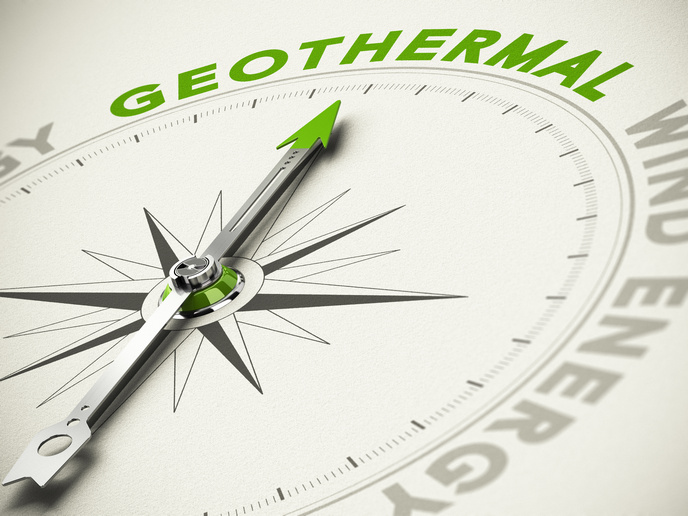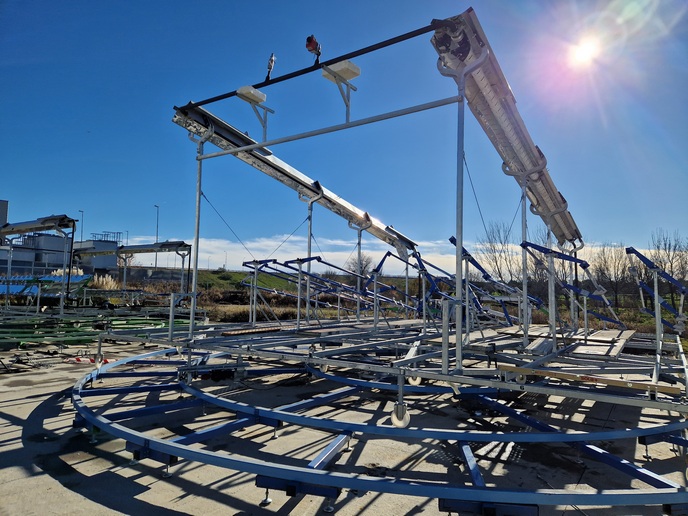Geothermal system innovations benefit buildings large and small
Compared to fossil fuels, geothermal energy emits very little CO2 or other greenhouse gases. But to harness this heat-carrying fluid near the Earth’s surface, its temperature must be raised by heat pumps (usually borehole heat exchangers). However, typical drilling technologies have a number of challenges that can be mitigated, including: expensive equipment, specialist teams, compressor noise, dangers from pressurised air (12-20 bars), potential borehole instability, the significant quantities of drinking-quality water required and poor working conditions. The EU-supported GEOTeCH project designed, built and tested a drill-rig which has already been commercially released by Conrad (a project partner) with hollow stem auger (HSA) drilling for shallow borehole heat exchangers (BHXs). The rig can drill quickly in loose soils (sand, gravel, clays), with minimal water usage. The costs of those units, designed for small-scale buildings, are 70 % of those for a comparable mud rotary rig, reducing barriers to entry for newcomers to the geothermal market. The project also developed a foundation heat exchanger (FHX) for use in larger buildings where it can be integrated with existing heating, ventilation and air conditioning (HVAC) systems, bringing down overall costs.
A geothermal solution for small and large buildings
A ‘plug and play’ BHX solution was developed for smaller buildings based on a coaxial spiral heat exchanger, which can tap energy from a shallower depth than usual. While this design has been available for a number of years, the project’s prototype updated it with a coextrusion of the internal spiralled pipe. This innovation allowed more cost-efficient performance at depths of 20-50 metres, when compared to conventional U-loop heat exchangers. GEOTeCH also developed an FHX for larger tertiary buildings, where a pipe is embedded into foundation structures, (e.g. walls). This approach avoids the drilling, pipe laying and grouting necessary for BHXs. Testing of the drilling technology and the heat exchangers was conducted at four buildings around Europe. The BHX system was demonstrated in small-scale office buildings in Amsterdam, Leicester and Padova. The FHX technology was demonstrated in a large-scale office building in Barcelona, where it was also integrated with the HVAC system.
A fitting solution
The Barcelona demonstration showed that GEOTeCH could be especially useful for larger new buildings to significantly reduce their energy consumption. “Our foundation heat exchangers have the same heat exchange capacity as borehole heat exchangers but the implementation costs are 82 % lower,” says Dery Torres, project coordinator. To run the full system for larger buildings, which involves managing a geothermal heat pump for heating and cooling conditions where other thermal energy resources may be available, two energy management systems (EMSs) were developed based on machine learning techniques. Both used open-source interfaces to work with existing building management systems, and their functionalities were validated in two buildings: the BTEK Museum building, Derio, Spain and the Hollandsch Huys campus building, Hasselt, Belgium. To bring the technology to market, the team are working to improve the performance of both the borehole and foundation heat exchangers, by optimising fluid content, flow rate, materials and the spiralling pitch for the borehole heat exchanger.
Keywords
GEOTeCH, geothermal, heat exchangers, energy management systems, HVAC, heating, cooling, drilling, drill-rig, borehole







